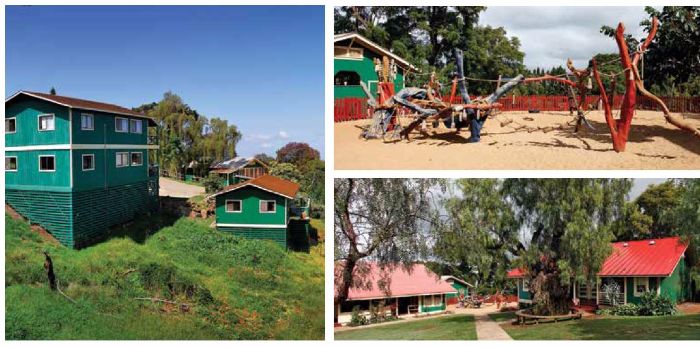Article by Jocelyn Romero Demirbag, Haleakala Waldorf School
This article originally appeared in the March/April 2015 Net Assets
The IRS Form 990 represents a laborious necessity for many independent schools. Its completion can be costly, time-consuming and frustrating, and the forms do indeed have faults. For instance, they do not differentiate between operating income and restricted income, nor do they acknowledge the year for which restricted donations are intended; they represent the past. Some administrators even find looking at other schools’ 990s distasteful in that they reveal information such as top salaries.
From my perspective, however, every number in a Form 990 is a window into that school’s strategies for remaining financially viable, especially in difficult times. That is why, in conducting research for my doctoral dissertation, I turned to the 990s of Maui’s small independent schools as a primary source of data in understanding how they survived the recession of 2008 in particular. I wanted to see if their strategies could be articulated, measured and evaluated. I also conducted first-person interviews to understand the context behind these numbers. Although I focused on small schools, the process I used could be applied to schools of any size.
The IRS Tax Form 990s
Every nonprofit school in the United States that is not under the auspices of a church is required to complete a Form 990 every year. Public documents that are readily and freely available on the internet, these forms are federally regulated, meaning the data is easily comparable from one school to another.
If you can look at the "essence" of surviving during the hardest times, you might have the backbone of what discipline is still required in the best of times.
GuideStar posts three years of a school’s most recent 990s. The 990s available at the time of my research spanned the school years 2009–10, 2010–11 and 2011–12. Because many items on the forms include data from “the prior year,” I was also able to look at data from 2008–2009. In short, I had data in hand that illustrated how Maui’s small schools made it through the “Great Recession.” I believed, as I wrote in my thesis, “If you can look at the ‘essence’ of surviving during the hardest times, you might have the backbone of what discipline is still required in the best of times.”
Fifteen of Maui’s 17 independent schools are considered “small,” defined as enrolling fewer than 300 students. Six operate independently of a church (including my own school) and are thus required to submit Form 990s to the IRS. A mini-biography of these schools provides notes of interest: Five began by renting space in churches and to this day employ women heads who had never been a head prior to their current assignment. Most of the schools have experienced challenging executive transitions in the past. All six were impacted by the recession—losing students, freezing or cutting salaries, and cutting positions as well. At least half of them cite the generosity of donors as key to their sustainability over the years.
The Data
When reviewing these six schools’ 990s, I looked at indicators that included:
- End-of-year balance
- Debt ratio
- Salary as a percent of total expense
- Tuition assistance as a percent of total expense
- Maintenance as a percent of total expense
- Management as a percent of total expense
- Program as a percent of total expense
- Fundraising as a percent of total income
- Number of board members
- Number of volunteers
Information on tuition assistance was usually available for the schools; their maintenance numbers were sometimes available. I recorded the data on an Excel spreadsheet along with enrollment and tuition data posted by the Hawaii Association of Independent Schools.
The data revealed clear conclusions about how Maui’s small independent schools survived the years beginning in 2008. For instance, most went into their reserves to cover expenses. They did this despite the fact that none had an endowment to speak of. They paid their heads of school less than pay for heads of school on Oahu, some 100 miles away. They used debt to finance assets. The Maui schools also experimented with tuition rates, but no discernible pattern correlated tuition changes and enrollment changes. In fact, although every school’s enrollment went down in the 2009–10 school year, a majority of them experienced growth over the four-year period. It was also clear that the schools used varying strategies for controlling expenses—there were no patterns in this area. Finally, neither the number of board members directing the schools, nor the total number of volunteers serving them, translated into a predictable pattern of funds raised.
Using the 990 data I could also calculate a benchmark for each school’s indicators by looking at their averages. Most schools’ salaries made up 60–65 percent of their total expenses. Management expenses spanned a low range of 10–13 percent to 32 percent. Program expenses hovered between 78 and 88 percent. In all six schools, expenses per student exceeded income per student. Of the four that reported tuition assistance data, three said those expenses were 6–9 percent of total expenses, and one school said 19 percent. Three of the six schools cited separate maintenance expenses: 2 percent at two schools, and 5 percent at one school.
Making Sense of the Data
In addition to studying 990 data, I interviewed five independent school experts in Hawai'i. They suggested that in order to remain financially sustainable, the small schools needed to do the following:
- Clearly articulate a relevant mission
- Attract and retain students
- Look at the “big picture” via strategic planning
- Operate on a balanced budget
- Fundraise
- Attract and retain faculty
- Get financial expertise
They also adapted to their environments. They experimented with different tuition rates, and held them down below their usual growth rates, even while planning for growth.
To this information I added my own observations from 15 years as a practicing administrator. While many of us were taught to believe the rational-technical philosophy that research must somehow be “objective,” “action research” is dependent on the personal experiences of the practitioners doing the research, according to You and Your Action Research Project, a book by J. McNiff and J. Whitehead, published in 2010. Based on my research, it quickly became apparent that in addition to following expert advice on financial sustainability, Maui’s small independent school leaders had to think like entrepreneurs in order to survive the challenging economic environment of those years.
In essence, Maui’s small schools did what it took to make ends meet. In tough times, they took actions such as relying on their reserves, lowering heads’ pay to keep expenses down, and taking on debt to pay for facility expansion. They also adapted to their environments. They experimented with different tuition rates, and held them down below their usual growth rates, even while planning for growth. To that end, the schools expanded their facilities, went into debt to do so, and were ready for growing enrollments when Maui’s economy began improving.
In the end, Maui’s small schools took chances, based on calculated risks, and defied the odds. And, they raised significant funds despite having small boards or few community volunteers.
The Passion and Commitment of School Entrepreneurs
In the final phase of my research, I interviewed six Maui school heads and business managers. These conversations confirmed that entrepreneurial spirit is a key aspect of financial sustainability. The passion and commitment required of an entrepreneur running a small business and the passion and commitment required for a small school to survive are quite similar.
That passion begins with a clearly articulated and relevant mission—one that resonates with the personal values of each school’s leaders and, in many cases, inspires them to make personal sacrifices on behalf of the school. Their stories noted that they at times spent more hours at school than with their families, paid for supplies out of their own pockets, and cut their own salaries to balance budgets. Like entrepreneurs, they worked until the job was done: They got to the office before anyone else, turned their kitchen tables into home offices, came in for long stretches on weekends. They held multiple roles within the organization. One business manager, for instance, also served as the school counselor and the computer fix-it person.

Interestingly, just after I drafted this article, I ran across an article in the Pacific Business News about a woman who had decided to start a staffing firm at age 60. Her story sounded deeply familiar. “You have to have strong dedication…You have to be committed to the journey.” And like the leaders of Maui’s small schools, she added, “In any business where you run the company, the challenges are that you have to do everything. You have to do the PR, you have to do the marketing, you have to do the financials, you have to do the staff training and development. You have to do community service. You have to wear every single hat.”
I encourage heads and business officers to look for stories in the IRS Form 990s of your independent school community. Do they provide benchmarks to aim for, or strategies to enlist? Perhaps they’ll clarify the strategies your school or community has long depended on. Perhaps they’ll guide you to consider taking a chance with a new strategy. Set aside your dislike of these lengthy documents long enough to benefit from what you are required to do anyway.
Though much maligned, 990s offer a wealth of data. They represent the summation of a school’s work in governance, fundraising, outreach, facilities management, enrollment, administrative management and programs. They describe and clarify the strategies we use for our school’s financial sustainability, and they are a testament to the striving that each employee makes on behalf of the school. Re-examine your own 990s and see if you, too, are called to serve the school as an entrepreneur.



